
East Lothian is one of the 32 council areas of Scotland, as well as a historic county, registration county and lieutenancy area. The county was also known as Haddingtonshire.

Midlothian is a historic county, registration county, lieutenancy area and one of 32 council areas of Scotland used for local government. Midlothian lies in the east-central Lowlands, bordering the City of Edinburgh, East Lothian and the Scottish Borders.

The Dean Cemetery is a historically important Victorian cemetery north of the Dean Village, west of Edinburgh city centre, in Scotland. It lies between Queensferry Road and the Water of Leith, bounded on its east side by Dean Path and on its west by the Dean Gallery. A 20th-century extension lies detached from the main cemetery to the north of Ravelston Terrace. The main cemetery is accessible through the main gate on its east side, through a "grace and favour" access door from the grounds of Dean Gallery and from Ravelston Terrace. The modern extension is only accessible at the junction of Dean Path and Queensferry Road.
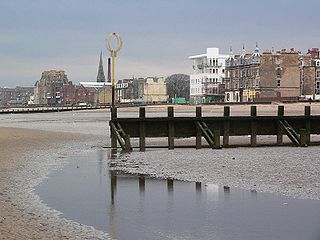
Portobello is a coastal suburb of Edinburgh in eastern central Scotland. It lies 3 miles (5 km) east of the city centre, facing the Firth of Forth, between the suburbs of Joppa and Craigentinny. Although historically it was a town in its own right, it is officially a residential suburb of Edinburgh. The promenade fronts onto a wide sandy beach.
Rev Prof Robert Flint DD LLD was a Scottish theologian and philosopher who wrote also on sociology.

Sir Ivison Stevenson Macadam was the first Director-General of the Royal Institute of International Affairs, and the founding President of the National Union of Students.

Tranent is a town in East Lothian, in the south-east of Scotland. It lies beside the A1 road,the A1 runs through the parish splitting the parish from its associated villages and hamlets namely Meadowmill and the port of the parish Cockenzie.The original main post road ran straight through the town until the new A1 was built.10 miles (16 km) east of Edinburgh. It is one of the oldest towns in East Lothian, and built on a gentle slope, about 90 metres (300 ft) above sea level. The population of the town is approximately 12,140, an increase of over 4,000 since 2001. Tranent was formerly a major mining town, but now serves as a commuter town for Edinburgh.
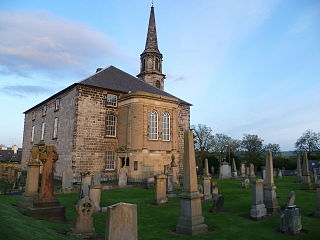
Inveresk is a village in East Lothian, Scotland situated 5⁄8 mi (1 km) to the south of Musselburgh. It has been designated a conservation area since 1969. It is situated on slightly elevated ground on the north bank of a loop of the River Esk. This ridge of ground, 20 to 25 metres above sea level, was used by the Romans as the location for Inveresk Roman Fort in the 2nd century AD.
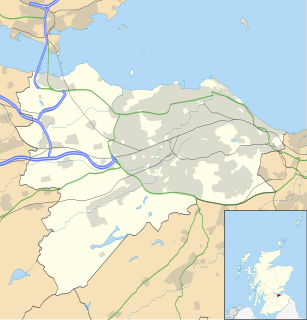
Brunstane is a northeastern suburb of the city of Edinburgh, Scotland. It lies on the A1 and is served by Brunstane railway station on the Borders Railway. Brunstane partly consists of new housing, such as the Gilberstoun estate, and also contains the 1950s council housing schemes known as Magdalene and the Christians, which are south and north of Milton Road respectively.
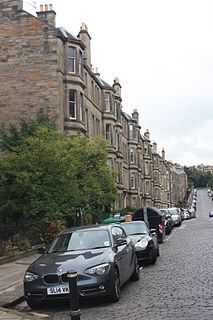
Comely Bank is an area of Edinburgh, the capital of Scotland. It lies southwest of Royal Botanic Garden and is situated between Stockbridge and Craigleith. It is bound on its northernmost point by Carrington Road and on its southernmost point by Learmonth Terrace. The area is covered by Stockbridge and Inverleith Community Council.

Joppa is an eastern suburb of Edinburgh, the capital of Scotland. It is bounded on the north by the coast of the Firth of Forth, on the west by Portobello of which it was a suburb when Portobello was a burgh, to the south by the open area south of Milton Road and to the east by Musselburgh in East Lothian. The name "Joppa" is of biblical origin, referring to the port of Jaffa in Israel, and was first bestowed on this part of Edinburgh in the 18th century.

Reginald Francis Joseph Fairlie LLD was a Scottish architect. He served as a commissioner of RCAHMS and on the Ancient Monuments Board for Scotland.
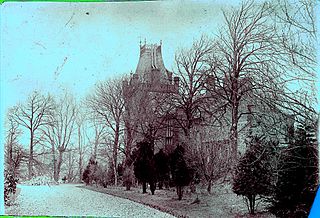
Dalmore was a country house and small estate in the Parish of Stair, East Ayrshire, on the River Ayr, East Ayrshire, Scotland
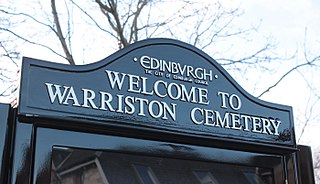
Warriston Cemetery is a cemetery in Edinburgh. It lies in Warriston, one of the northern suburbs of Edinburgh, Scotland. It was built by the then newly-formed Edinburgh Cemetery Company, and occupies around 14 acres (5.7 ha) of land on a slightly sloping site. It contains many tens of thousands of graves, including notable Victorian and Edwardian figures, the most eminent being the physician Sir James Young Simpson.
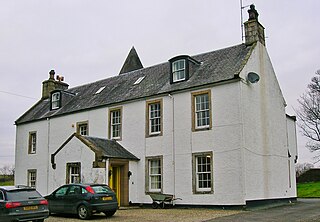
Monkredding formed a small estate in the Parish of Kilwinning, North Ayrshire lying between Kilwinning and Auchentiber on the B778. The property was originally held by the Tironensian monks of Kilwinning Abbey and was the 'Monk's Garden', the rest home for the brothers. Monkcastle near Dalgarven was the abbot's country retreat. Monkredding remains in good condition and is in use as a private house in 2010.
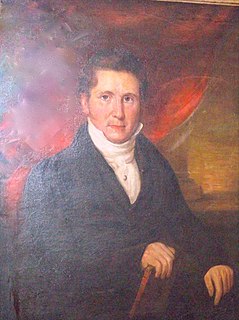
William Macadam was an industrialist, a burgess and bailie (magistrate) of Glasgow. He owned a weaving mill and calico printing works in Kilmarnock near Glasgow.

Morningside Cemetery is a cemetery in Edinburgh. It was established in Edinburgh in 1878 by the Metropolitan Cemetery Company, originally just outwith the then city boundary, the nearest suburb then being Morningside. It extends to just over 13 acres in area. The cemetery contains 80 war graves. Although arguably visually uninspiring the cemetery contains the graves of several important female figures; including a female air commandant, Scotland's first female surgeon, the first female Fellow of the Royal College of Physicians of Edinburgh, a Nobel Prize winner and many church missionaries.
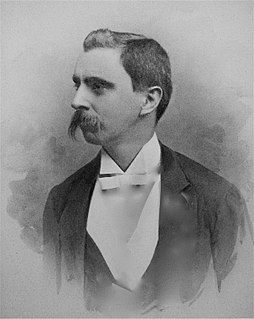
Colonel William Ivison Macadam

Stevenson Macadam was a Scottish scientist, analytical chemist, lecturer, and academic author.

Portobello/Craigmillar is one of the seventeen wards used to elect members of the City of Edinburgh Council. Established in 2007 along with the other wards, it elects four Councillors.





















